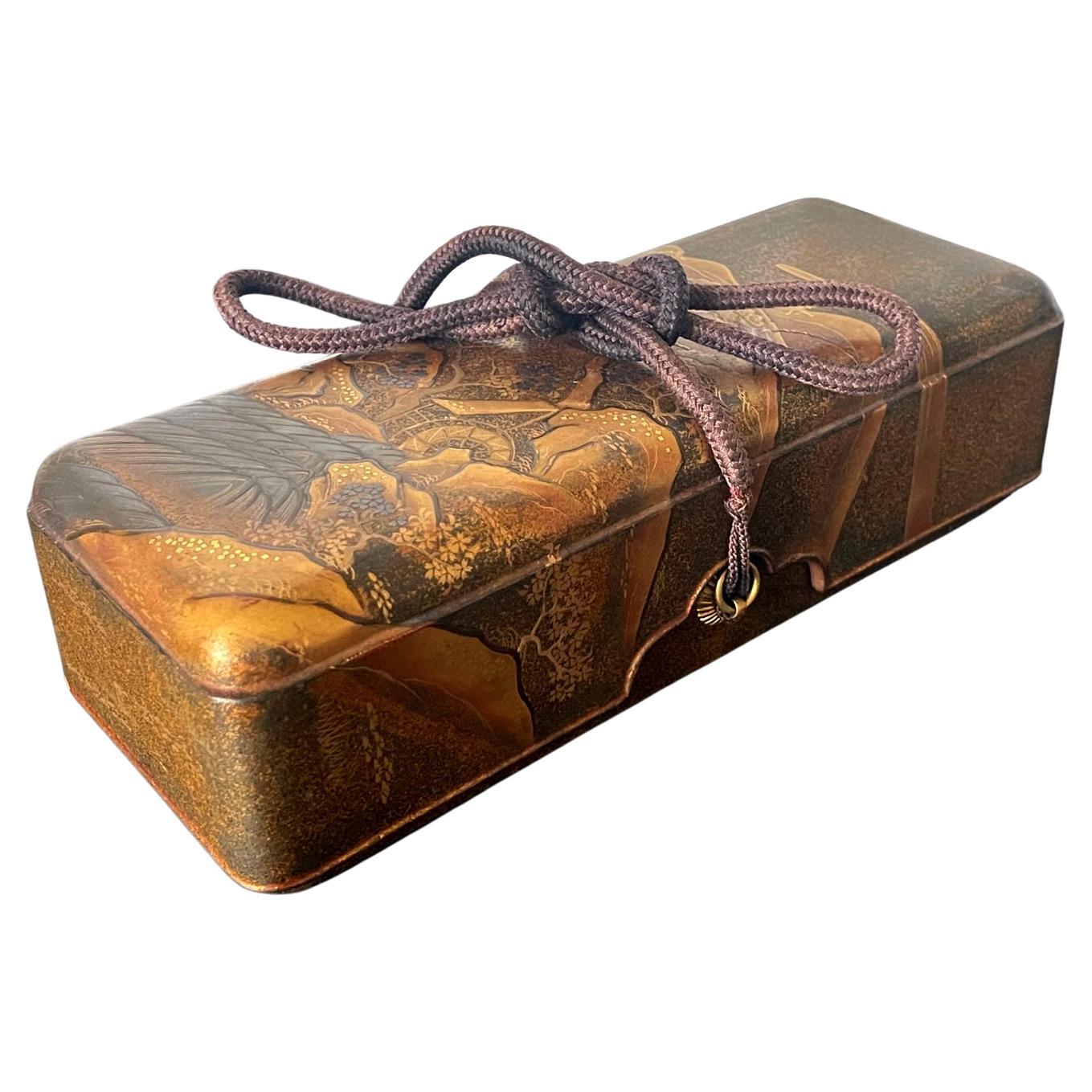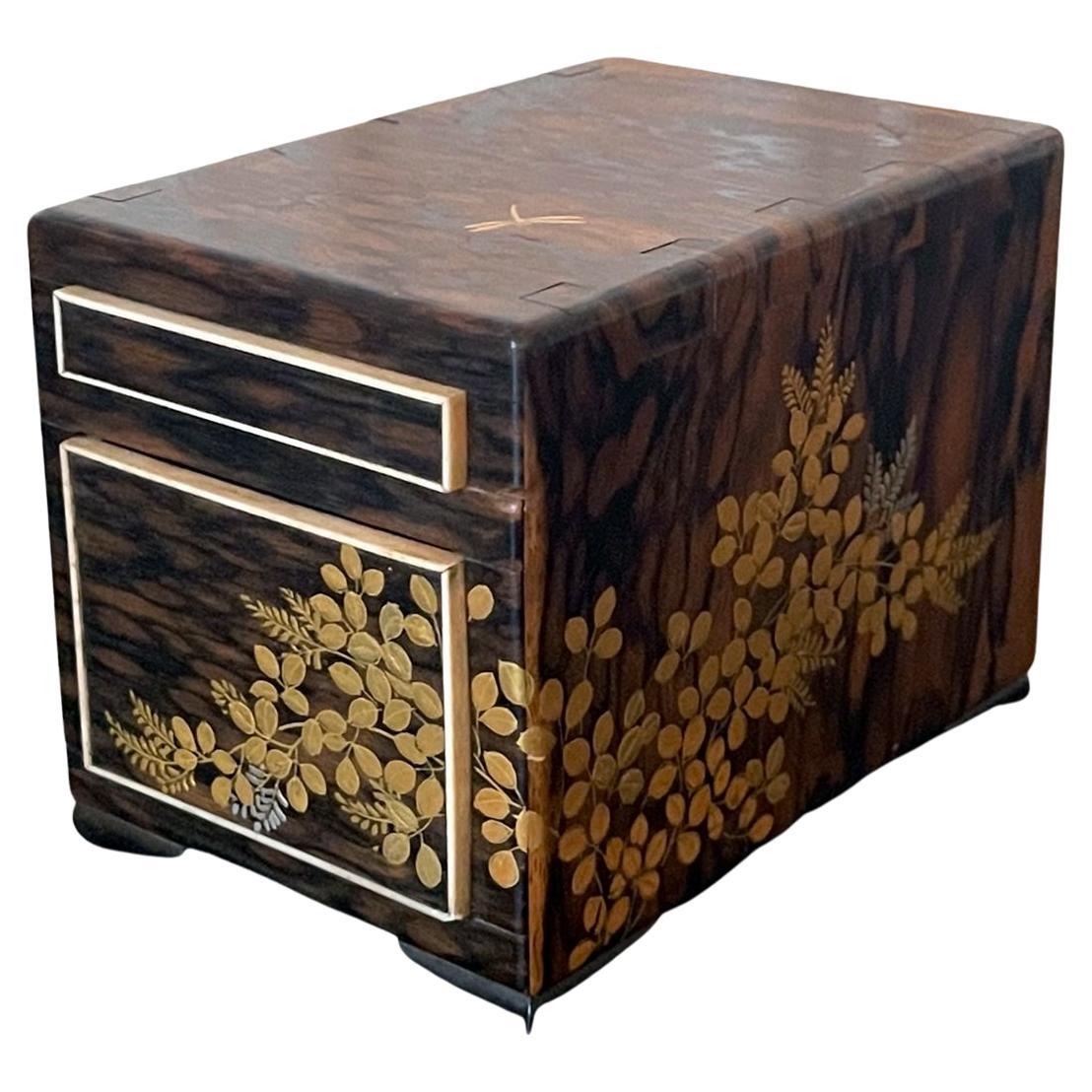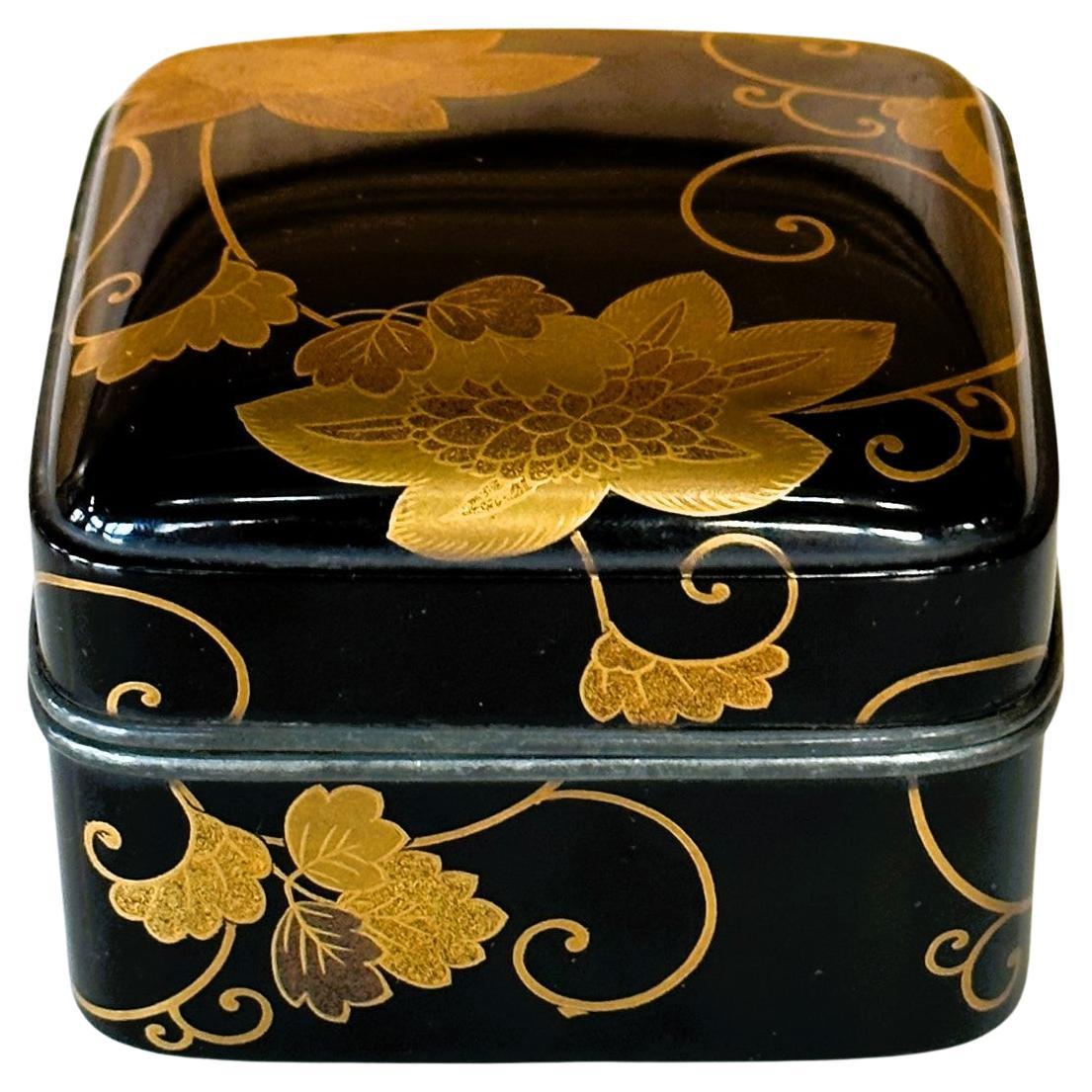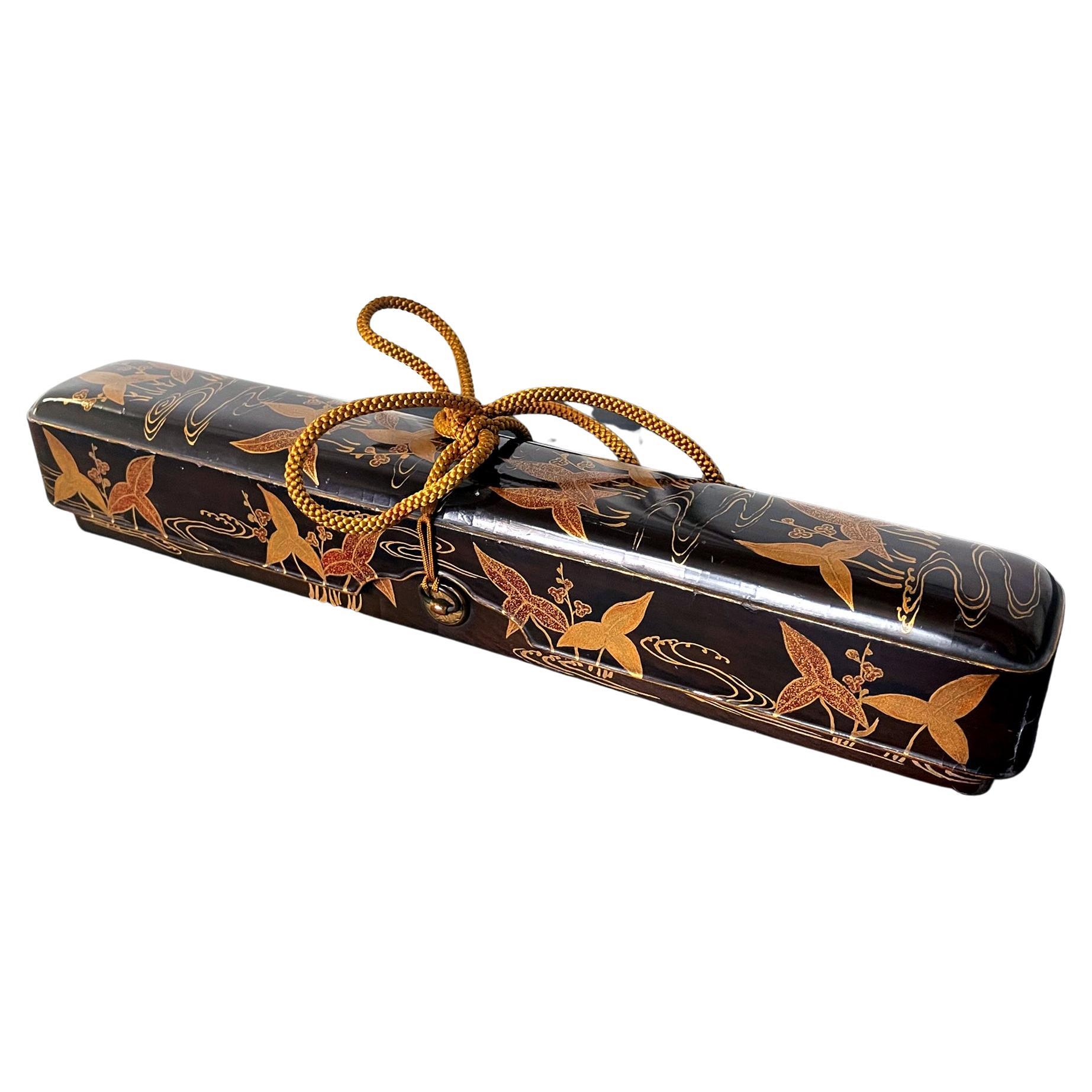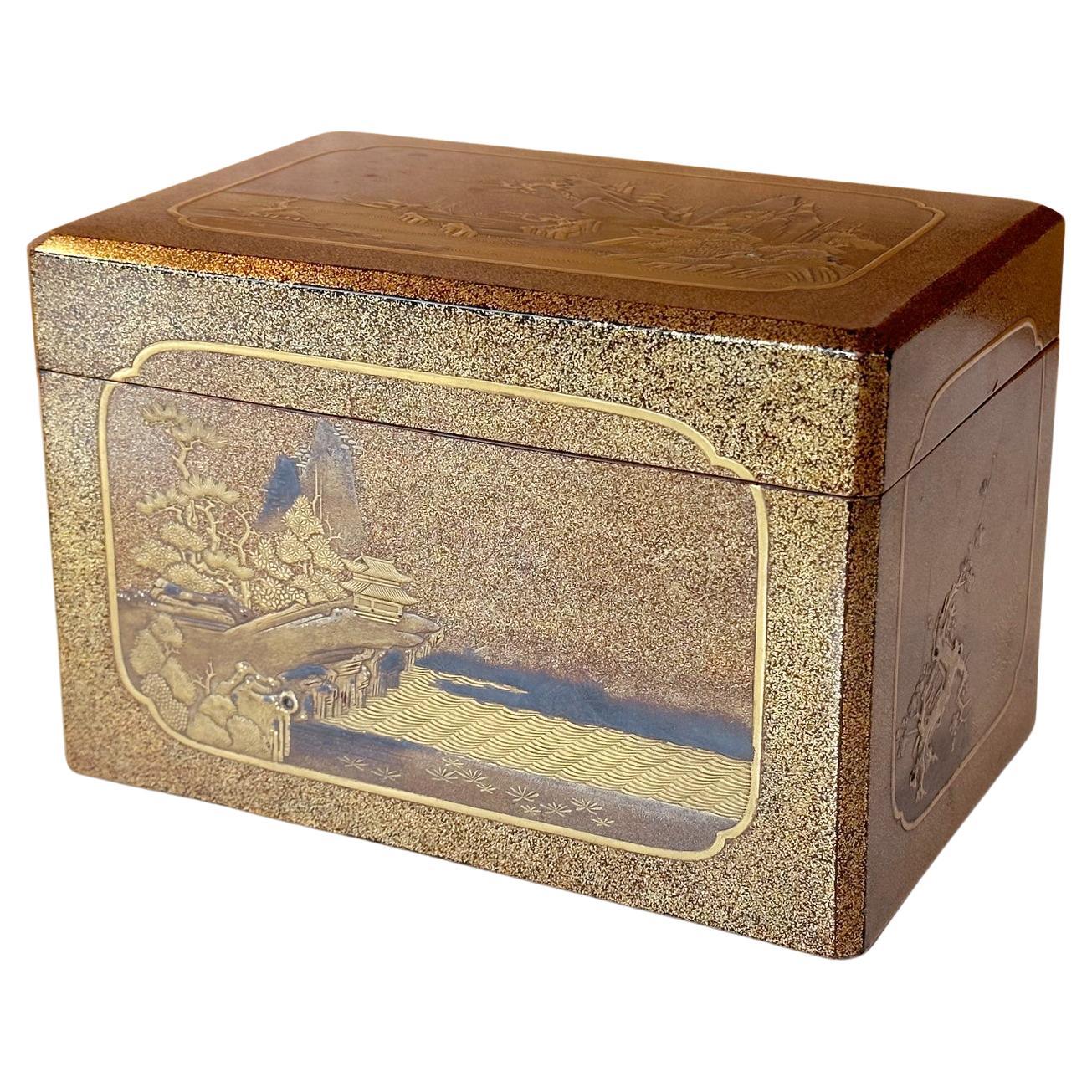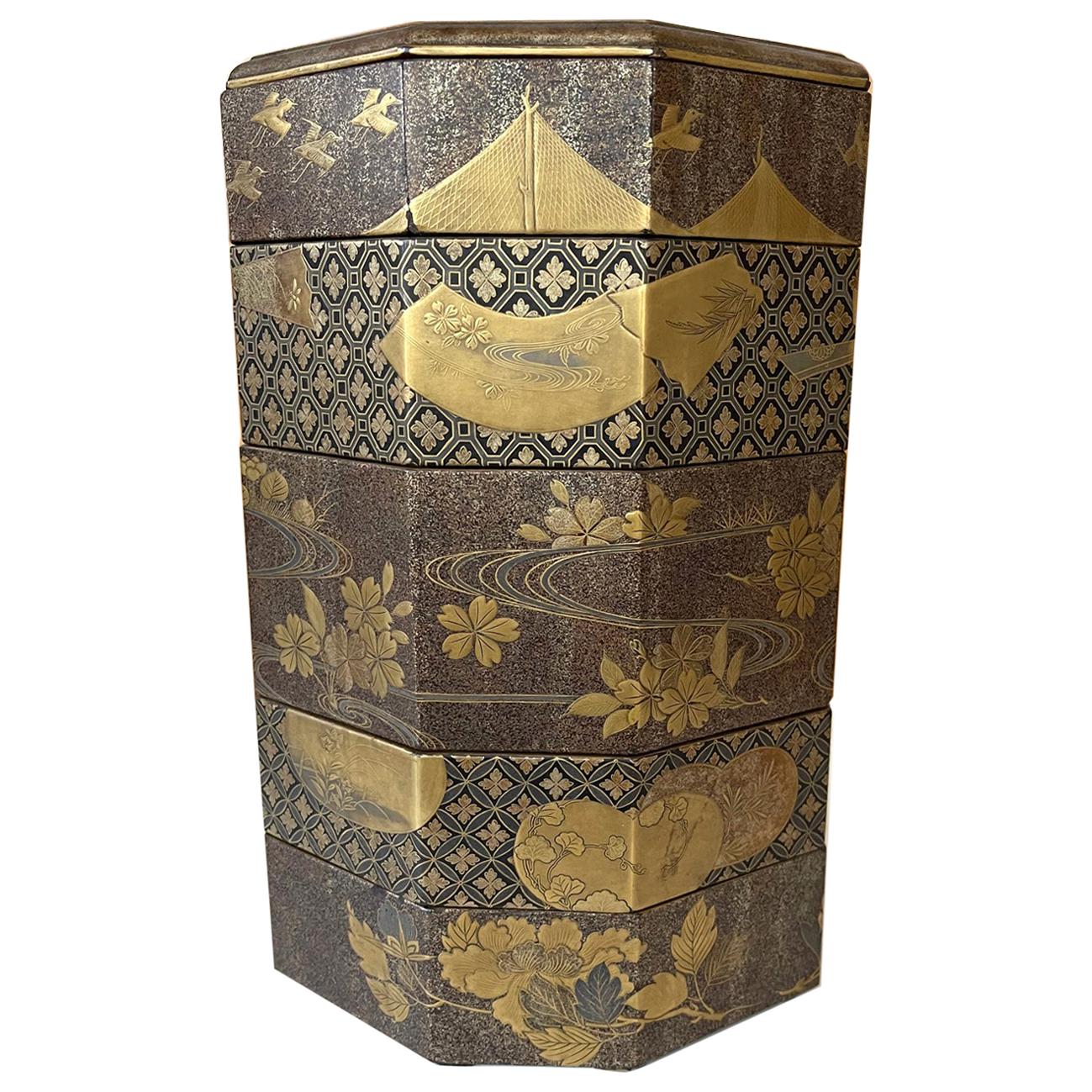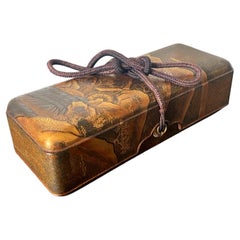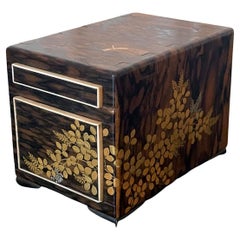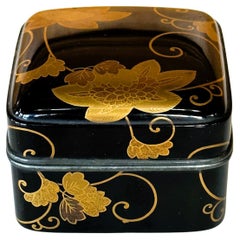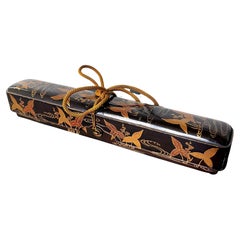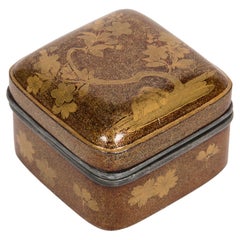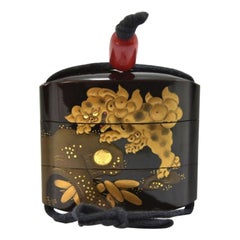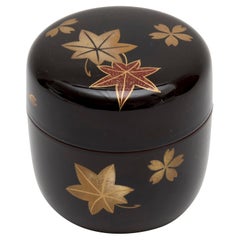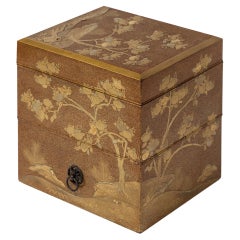Items Similar to Japanese Lacquered Maki-E Natsume in Kodaiji Style
Want more images or videos?
Request additional images or videos from the seller
1 of 14
Japanese Lacquered Maki-E Natsume in Kodaiji Style
$3,800
£2,872.33
€3,300.82
CA$5,291.48
A$5,886.55
CHF 3,085.80
MX$71,932.21
NOK 39,293.86
SEK 36,989.73
DKK 24,639.34
Shipping
Retrieving quote...The 1stDibs Promise:
Authenticity Guarantee,
Money-Back Guarantee,
24-Hour Cancellation
About the Item
A Japanese lacquered tea caddy (known as Natsume) with fine Maki-e decoration circa 18-19th century Edo to Meiji period. The large-sized natsume with a fitted lid, sometimes also called usuchaki, was traditionally used to store tea powder for ceremonial Chado. The surface is decorated in maki-e of fine scrolling vines with hanging guards. The decorative style of the surface was in a typical style called "Kodaiji style" originated in the 16th century during Momoyama period from the Kodaiji, a Zen Buddhism temple located in Kyoto. The characteristics of this style include the following: a pure black background on which various shades and thickness of shimmering gold maki-e were applied, creating a beguiling contrast. The design tends to be simple but elegant with emphasis on motif repetition and geometrical forms, with the favorite subjects being the floral patterns of the fall. The technique used was revolutionary for the time with nashiji being used for part of the design instead of as background. This is called e-nashiji. Often there are outlines of the floral that was executed with dense gold powder (as seen in alternate leaves infill with gold powder on this piece). It is noted that the black background has faded into a deep brown due to the light exposure, indicating the age of this piece. There are also patina and wears inside the container apparently from use. The natsume comes with a worn storage wood box (tomobako) with kanji ink inscription on the lid but they have faded and become partially illegible. We can make out the word maki-e large natsume and possible the name of the Natsume "Dusk". Under the tomobako, it was clearly marked "Jisho-in Holding". Jisho-ins are temples for Buzan sect of Shingon Buddhism and origin place for the famous Japanese cat Jizo. There are many Jisho-ins across Japan, so it is not possible to know which temple this natsume used to belong to.
- Dimensions:Height: 3 in (7.62 cm)Diameter: 3 in (7.62 cm)
- Style:Meiji (Of the Period)
- Materials and Techniques:
- Place of Origin:
- Period:
- Date of Manufacture:19th century
- Condition:Wear consistent with age and use. Fine condition with mellow patina due to exposure to light, minor rubbing on the higher part of the maki-e (gourds), minor wear on the base and interior bottom. Tomobako is worn and repaired on the base.
- Seller Location:Atlanta, GA
- Reference Number:1stDibs: LU945034539402
About the Seller
4.9
Platinum Seller
Premium sellers with a 4.7+ rating and 24-hour response times
Established in 2006
1stDibs seller since 2010
564 sales on 1stDibs
Typical response time: <1 hour
- ShippingRetrieving quote...Shipping from: Atlanta, GA
- Return Policy
Authenticity Guarantee
In the unlikely event there’s an issue with an item’s authenticity, contact us within 1 year for a full refund. DetailsMoney-Back Guarantee
If your item is not as described, is damaged in transit, or does not arrive, contact us within 7 days for a full refund. Details24-Hour Cancellation
You have a 24-hour grace period in which to reconsider your purchase, with no questions asked.Vetted Professional Sellers
Our world-class sellers must adhere to strict standards for service and quality, maintaining the integrity of our listings.Price-Match Guarantee
If you find that a seller listed the same item for a lower price elsewhere, we’ll match it.Trusted Global Delivery
Our best-in-class carrier network provides specialized shipping options worldwide, including custom delivery.More From This Seller
View AllJapanese Lacquered Maki-e Fubako Edo Period
Located in Atlanta, GA
A Japanese lacquered wood fubako (a box used to store document or small scroll painting), circa second half of 19th century late Edo period. The rectangular box features an unusually deep lipped lid with slightly rounded corners, a conforming lower box that is almost entirely covered by the lid which has two bronze medallion rings with tasseled...
Category
Antique 19th Century Japanese Edo Lacquer
Materials
Wood, Lacquer
Fine Miniature Japanese Kodansu with Lacquer Inlays
Located in Atlanta, GA
A fine Japanese miniature kodansu constructed from Kaki wood (Persimmon) circa 19th century, late Meiji period. With its expressive exotic wood grains and exposed tenon construction,...
Category
Antique Late 19th Century Japanese Meiji Lacquer
Materials
Wood
Antique Japanese Lacquered Incense Box Kobako in Kodaiji Style
Located in Atlanta, GA
An antique lacquered small box that was likely used to contain incense powder (it is called Kobako in Japanese), circa early to mid-19th century of the Edo...
Category
Antique 19th Century Japanese Edo Lacquer
Materials
Wood, Lacquer
Japanese Lacquered Maki-E Fubako in Kodaiji Style
Located in Atlanta, GA
A rare Japanese lacquered wood fubako decorated in Kodaiji maki-e style circa early 17th century the beginning of the Edo period, possibly early toward the end of the Azuchi-Momoyama period. The rectangular, long and slim box features a deep lipped lid with slightly rounded corners, a conforming lower box with two bronze medallion rings with tasseled...
Category
Antique Early 17th Century Japanese Edo Lacquer
Materials
Wood, Lacquer
Exquisite Japanese Lacquer Maki-e Hand Box Kobako Edo Period
Located in Atlanta, GA
An early Japanese lacquer Maki-e decorated kobako (small storage box) circa 18th century (Edo period). Based on its form and size, this kobako was possibly used as a Chabako to store the accoutrements for chado (tea ceremony). The lidded box is of rectangular form with bevel design on all edge that softens the appearance. The entire surface was densely covered with a background of nashiji. Elaborate Maki-e techniques were used on each side to showcase a distinct landscape or floral design within a cartouche panel. On the surface of the lid, a mountainous landscape rises from the edge of the water. The poetic composition is akin to a traditional ink scroll...
Category
Antique 18th Century Japanese Edo Lacquer
Materials
Lacquer
Japanese Maki-e Lacquer Stack Box Jubako
Located in Atlanta, GA
An antique jubako (stack boxes) with five tiers in an elongated octagon shape circa 19th century (end of Edo or beginning of Meiji period). jubako was traditionally used to store and...
Category
Antique 19th Century Japanese Japonisme Lacquer
Materials
Wood, Lacquer
You May Also Like
Japanese lacquered Cherry Tree Kobako
Located in PARIS, FR
Kobako in nashiji lacquer of square shape with a hira maki-e décor of a blossoming
cherry tree. Both of the four sides are adorned with golden lacquer cherry flowers,
represented i...
Category
Antique 19th Century Japanese Lacquer
Materials
Lacquer
Japanese Inro XIXth Century with 3 Lacquered Wood Boxes
Located in Marseille, FR
19th Century Japanese inro with 3 lacquered wooden compartments, 63 x 70 x 22 mm in size. Weight 39.1 g.
Additional information:
Material: Lacquered ...
Category
Antique 19th Century Japanese Snuff Boxes and Tobacco Boxes
Materials
Wood
Japanese Natsume or tea box adorned with mapple leaves and sakure flowers
Located in PARIS, FR
Natsume in dark red lacquer, decorated with autumn leaves and cherry blossoms in hiramaki-e and nashiji. Interior in black lacquer.
Maple leaves (Momiji) are celebrated in literature...
Category
Early 20th Century Japanese Taisho Lacquer
Materials
Gold
Japanese Tebako in Nashiji lacquer adorned with golden Persimon flowers
Located in PARIS, FR
Tebako box with two compartments in golden and nashi-ji lacquer, decorated with golden, red, and kirigane lacquer, golden persimmon tree leaves, among rocks. The compartments are of ...
Category
Antique Early 19th Century Japanese Meiji Lacquer
Materials
Gold
Japanese golden kobako flowers Edo period 18th century
Located in PARIS, FR
Quadrangular kobako box decorated with flowers in gold and blue lacquer with aogai inlay. Lid and sides in fundame lacquer, underside and interio...
Category
Antique 18th Century Japanese Japonisme Lacquer
Materials
Gold
Japanese Ecru Lacquered Natsume 棗 'Tea Caddy' with Maki-E of Carriage Wheels
Located in Amsterdam, NL
Uncommon ecru lacquer tea caddy (natsume) with a nice golden hiramaki-e (low-relief design) of cart wheels submerged in a wild swirling stream.
The design ...
Category
20th Century Japanese Lacquer
Materials
Giltwood, Lacquer
More Ways To Browse
Black Gold Lacquer
Black Lacquer Storage
Japanese Containers
Lacquered Large Boxes
Japanese Zen Furniture
Large Lacquer Box
16th Century Japanese
Japanese Wood Temple
Temple Lacquer
Japanese Cat
Japan Tea Box
Antique Powder Boxes
Asian Black And Gold Decoration
Maki E
Japanese Hanging Light
Temple Guards
Edo Period Scroll
Meiji Lacquer Box
